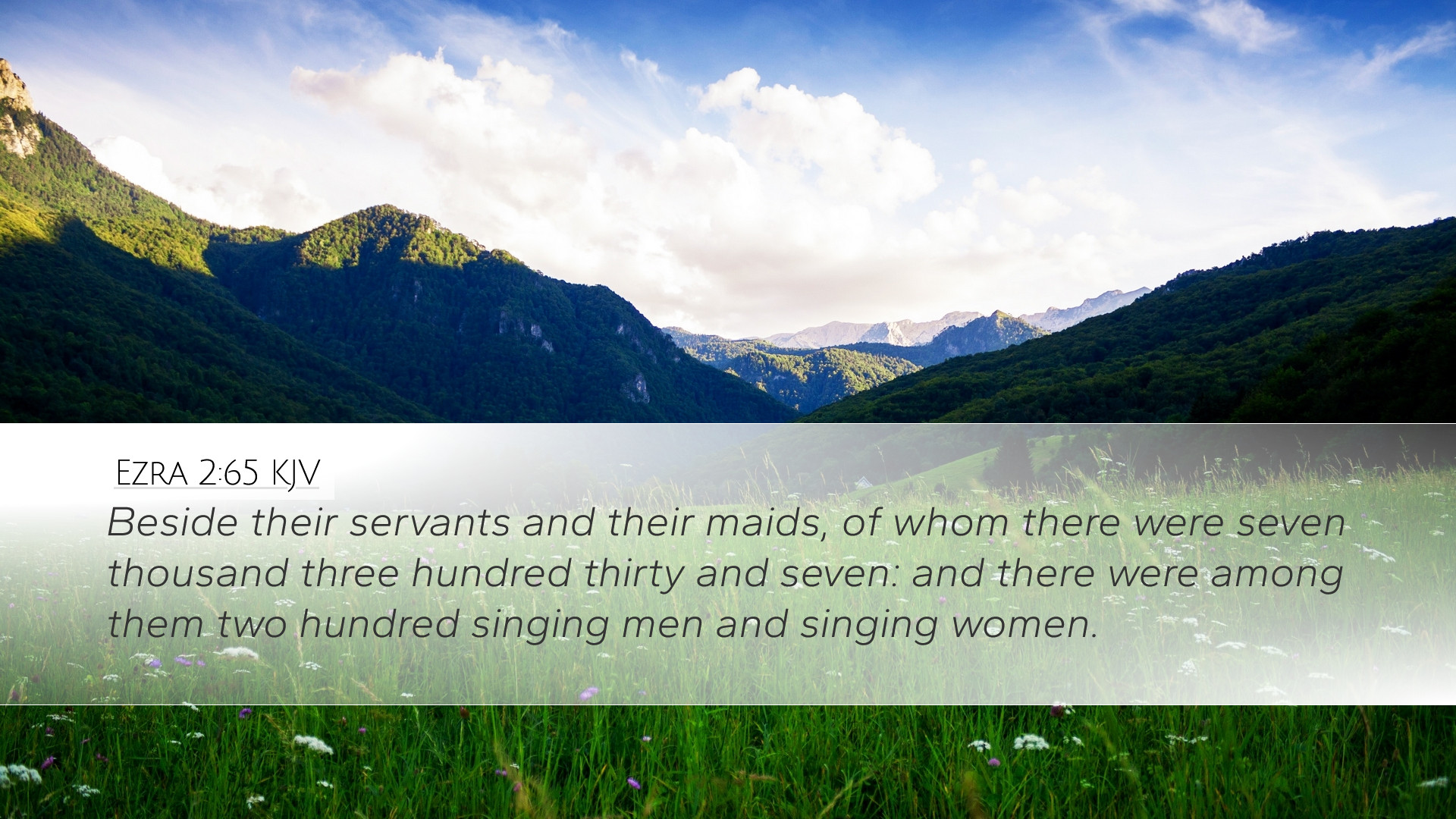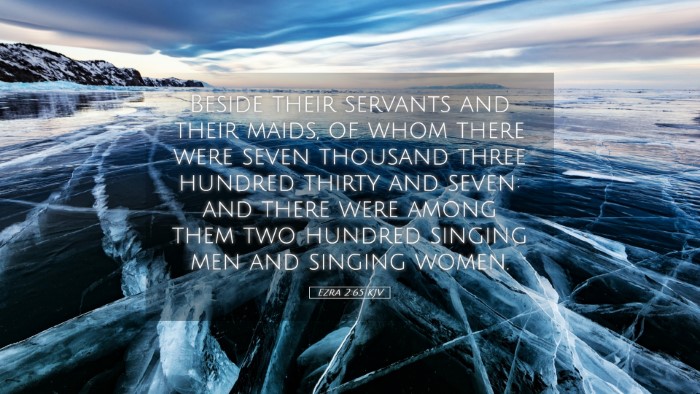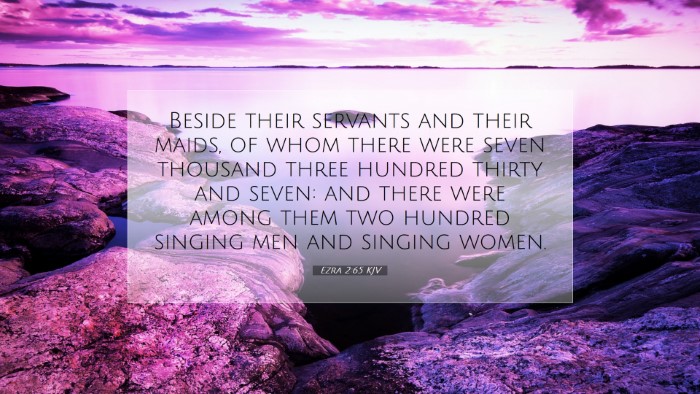Commentary on Ezra 2:65
Introduction
The verse Ezra 2:65 states, "Beside their servants and their maids, of whom there were seven thousand three hundred thirty and seven: and there were among them two hundred singing men and singing women."
This passage provides insights into the social structure of the returning exiles, highlighting the importance of both laborers and artisans, particularly in the context of worship and community life.
Contextual Framework
This verse is situated within the narrative of the return from Babylonian exile, marking a critical juncture in the history of Israel. The listing of those returning serves to re-establish identity and continuity for the people of God. As commented illustratively by Matthew Henry, this verse implies that Israel's restoration involved not just the return of individuals but also the restoration of communal life and worship practices.
Population Details and Social Structure
The verse notes a considerable number of "servants and maids" (7,337). Albert Barnes points out that these individuals reflect the existing social hierarchy, which played a vital role in assisting the returned exiles to rebuild their lives and restore their national and religious practices. The presence of servants signifies that the returnees were not merely individuals but a community equipped with the necessary resources for rebuilding their society.
The Role of Singing Men and Women
The mention of the "two hundred singing men and singing women" highlights the importance of worship in the life of the returning exiles. Adam Clarke emphasizes that music played a central role in the Israelite tradition, particularly in their worship and communal celebrations. This aspect underscores the returning community's commitment to re-establishing proper worship—a vital construct of their national identity and relationship with God.
Theological Implications
Matthew Henry emphasizes that this verse, while seemingly a mere enumeration, reflects deeper theological truths about God's preservation of His people. The return of these individuals and their roles signal God's faithfulness, showcasing His commitment to the covenant and the restoration of worship. The presence of musicians also reflects a joyous restoration, aligning with the biblical imperative of worship as a response to divine grace.
Additionally, the numbers presented symbolize a community ready to engage in both labor and worship, suggesting that the function of service and that of praise are interwoven in the life of a faithful community. Albert Barnes contemplates that true worship arises from a life of service—a theme that echoes throughout the Scriptures.
Practical Applications
For pastors, students, and Bible scholars, Ezra 2:65 encourages reflection on the role of community in worship. The integration of different social classes and functions demonstrates the importance of diversity in the body of Christ—each role contributes to the totality of worship and service.
- Community Building: This verse serves as a reminder that church communities ought to involve all members in meaningful ways, recognizing that each person’s contribution, be it vocal or practical, is valuable.
- Worship as a Collective Experience: The position of singers emphasizes that worship is not a solitary endeavor but one that finds its fullness in community engagement.
- God’s Faithfulness: The historical context invites reflection on God’s ongoing work in the church today, reminding us of His promise of restoration and community integrity.
Conclusion
Ezra 2:65 offers profound insights into the communal life of the people of Israel upon their return from exile.
Drawing from the observations of Matthew Henry, Albert Barnes, and Adam Clarke, the verse transcends its numerical emphasis to paint a picture of restoration and communal identity through worship and service, inviting today's believers to reflect upon their roles within the body of Christ.


